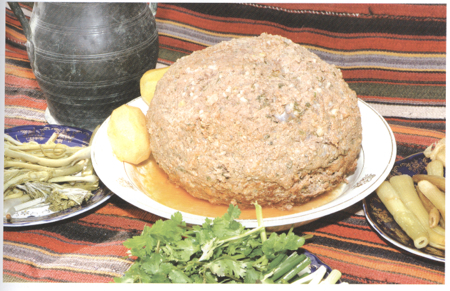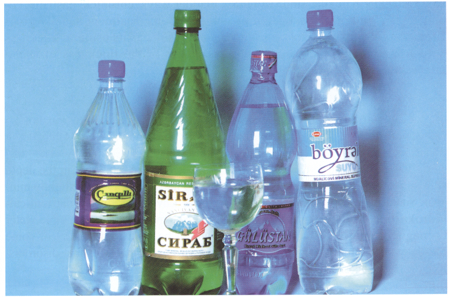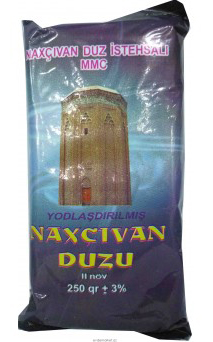Cuisine
It is a great happiness to know your own history. Each page of the history of our culture is rousing an interest. Turning over these pages the big way of life that our great grandfathers have passed is being revived in front our eyes. While learning our history, culture, our memories become strong and more increases our love.
We mustn’t forget that in every step of the motherland, words and speeches, dressings, meals and drinking, armors, holidays, parties and mourning ceremonies of our grandfathers and grandmothers have supplied to us becoming eternal. There is a need of turning over, learning of the pages which are unknown us in these trusts, yet. While thinking of all these, the expressions of “Let your hearth never become out of fire”, “Let your lamp never turns off’, “Let me be a sacrifice to the fire of your hearth” of our grandfathers are remembered, which have been byword of us. Again we remember our proverb of “Keep safe what you have been entrusted with”. That is the debt of each of us to protect and make these trusts lively, which have become worthy as being polished, coming from intensity of millenniums.
 As one of the forms of culture, the culture of cuisine, philosophy and psychology of nourishing are also rousing an interest nowadays which have been improved, exposed to changes in the course of time, in the historical pages of our people and reached to present day. Our great grandfathers gave us a heritage distinguishing its own peculiarities in this field, in our ancient land, in our father property - Nakhchivan, too. Our cuisine, culture of dishes must always rouse interest for our historians, ethnographers and archaeologists from the point of view of investigating the ethnographic features of the territory.
As one of the forms of culture, the culture of cuisine, philosophy and psychology of nourishing are also rousing an interest nowadays which have been improved, exposed to changes in the course of time, in the historical pages of our people and reached to present day. Our great grandfathers gave us a heritage distinguishing its own peculiarities in this field, in our ancient land, in our father property - Nakhchivan, too. Our cuisine, culture of dishes must always rouse interest for our historians, ethnographers and archaeologists from the point of view of investigating the ethnographic features of the territory.
It’s possible to say according to the materials being found at the result of archaeological excavations which are carried out in the area of Nakhchivan Autonomous Republic that, there have been special places in order to prepare eating products in Eneolithic (Chalcolithic) and later periods, in our country. Existence of special places for cooking bread, preparing meal and the different home things, table-wares being found in our territory proves that. Archaeological investigations show that, passing from stone to ceramics, China bowl then to metal brought to great changes in way of life. These are all valuable ethnographic sources from the point of view of learning our culture of cuisine and investigating our way of life.
Table-wares, home things have been exposed to changes in the course of time. Nevertheless, most of table-wares, equipment and means of way of life are keeping their places in our life at the present day. When cast a glance to ovens made of clay in a hole on the ground, fire places, equipment for making flour, table-ware, kettle and etc. which appeared at the result of lately archaeological excavations, that history is being revived in front of eyes. The history keeps up its sign in the names of these table-wares and home things. There are enough apt expressions connected with table-wares, fire place in our proverbs.
 In this field, a lot of materials have been collected at the result of archaeological investigations that have been carried out nearly ten areas of Nakhchivan city, and other regions of Nakhchivan Autonomous Republic one of the oldest cultural centers of Azerbaijan.
In this field, a lot of materials have been collected at the result of archaeological investigations that have been carried out nearly ten areas of Nakhchivan city, and other regions of Nakhchivan Autonomous Republic one of the oldest cultural centers of Azerbaijan.
The round fire place device made of clay found in the territory of autonomous republic is interesting from the point of view of enlightening the ancient marks of our way of life. Or, rough-walled kettle and splinters of clay pots, have been found in the area of our ancient land, inform that the eating, drinking, home culture of this land leans upon millenniums. The results of archaeological investigations prove that, the clay equipment have been used in our territory in Eneolithic period. There had been some important changes in pottery in Middle Bronze Age, in Nakhchivan area. Being aware of preparation of potter wheel, which is one of the most important inventions in the history of mankind, our great-grandfathers had made glazed home things of high quality.
To find white-colored plant roots in the wells which were found out at the result of investigations pursued in Nakhchivan territory and putting forward an idea of keeping of cereals there shows that tillage was improved in the very ancient times in here. Different fire place devices and etc. which were found in the area of Nakhchivan shows that our ancestors paid a special attention to cooking.
 In the course of time, strong increasing in the daily life of inhabitants of ancient Nakhchivan - cattle-breeding, tillage and different kinds of handicraft and the ways bringing to development of culture of national cuisine are obviously seen. Variety in the shapes of ancient cholmek (kettle made of clay), pot, bowl, jug, big jug and different crockery displays gradual improvement of this sphere. It is necessary to note that, the clay churns which were found in Nakhchivan territory, are belonged to IV-III centuries B.C. Ruins of potter’s shop which were found in the territory of Nakhchivan, have been carrying the signs of our millenary way of life till today.
In the course of time, strong increasing in the daily life of inhabitants of ancient Nakhchivan - cattle-breeding, tillage and different kinds of handicraft and the ways bringing to development of culture of national cuisine are obviously seen. Variety in the shapes of ancient cholmek (kettle made of clay), pot, bowl, jug, big jug and different crockery displays gradual improvement of this sphere. It is necessary to note that, the clay churns which were found in Nakhchivan territory, are belonged to IV-III centuries B.C. Ruins of potter’s shop which were found in the territory of Nakhchivan, have been carrying the signs of our millenary way of life till today.
Archaeological explorer and the author of valuable investigations in this field, The Associate Member of ANSA Veli Aliyev writes: “It’s possible to consider the dyed crockery as important characteristics of the city culture, which are thought distinctive for ancient culture of Nakhchivan. Nakhchivan differs from the ancient cultural hearths of Caucasus and it’s not casual that, it’s dyed crockery are even in the level of being compared with the dyed crockery of the main ancient centers of culture of Near East (Mesopotamia, Urmia, Elam and etc.)”.
Home things belonging to various periods that are demonstrated in Nakhchivan State History Museum, shows the existence of our cuisine culture from very ancient times.
According to the ethnographic materials collected in Nakhchivan Autonomous Republic it’s possible to say that, other names of kitchen existed in our country, as well: “tendirbashi”, “gafakhana”, “bish-dush dami” and so on.
In underground and on earth tendirs (furnace made of clay) our people had cooked lavash (a kind of bread), tendir chorek, various dishes, holiday meals, at times.
Containers made of skin (motal (sheep's skin for keeping cheese), tulug (wineskin) and etc.), and wood (nehre (churn), tokhmag (wooden hammer like device used for biting meat), okhlov (long, thin wooden stick used for spreading dough), chepere, wooden spoon and etc. used in our national cuisine have been used throughout the history, in Nakhchivan territory.
 Dolma, bozbash, taskabab, tendir-kabab, yarma ashi, dash kuftesi, lule-kabab and etc. cooked in our land, displaying the specialties of the region itself. In Nakhchivan cuisine, the plov has its own place, in Azerbaijan cuisine, as well.
Dolma, bozbash, taskabab, tendir-kabab, yarma ashi, dash kuftesi, lule-kabab and etc. cooked in our land, displaying the specialties of the region itself. In Nakhchivan cuisine, the plov has its own place, in Azerbaijan cuisine, as well.
Respect to bread has been shown always in our country and our great - grandfathers have used the expression of... So we say: “bread is the head of my table”. The people had been using dried lavashes keeping them for some months, since centuries, in Nakhchivan territory. The preparation of the “somun” bread by barley flour in Nakhchivan land was shown in ethnographic sources.
Umadj, khashil, guymag, erishte, yarma ashi that our great grandfathers and great grandmothers had eaten since centuries, are prepared willingly in the regions of Nakhchivan. All these show that, pastries in Azerbaijan cuisine have kept its place in our region, as well.
Meat meals specific for Nakhchivan cuisine (Especially, mutton, fresh leaf and different housebirds meat, as well) - govurma, bozbash, govurma shorbasi, bozport, kelle-pacha, kabab, arzuman kouftesi, jeviz kouftesi, dash koufte, dolma of grape leaves, cabbage, aubergine, tomato, onion and etc. Preparation of such meals tastefully is distinguished with their taste and savor. The meals made of bird meat characteristic for our region, were always special place in Nakhchivan cuisine. Especially, kuku, shami omelette and etc. dishes by the egg of hen are being prepared very delicious in our territory. The Ordubad omelette with honey differs with its taste.
Highly developed cattle-breeding in the area of Nakhchivan Autonomous Republic has shown itself in the dishes of the region which are connected with milk and milk product. Such meals and dishes like sour-milk, cheese, cream, buttermilk, cottage cheese, dovga, milk porridge, sour-milk porridge and etc. have a special place in the cuisine of Nakhchivan. So, leaven used for fermenting milk is being called “chalasi” at present day, as well.
Nakhchivan cuisine is also famous with its confectionary, sweets, various syrups and drinks. There are so many bakmaz makers in present day with mulberry, grape which has come from intensity of ancient centuries. Jams of cornel, cherry, sour-cherry, quince, apricot, fig, walnut, grapes, watermelon, blackberry and rose are the ornament of our table.
 At the same time with all of our rich and delicious examples of dishes, it is necessary to note the most important feature standing on the basis of culture, philosophy and psychology of cuisine of our country - hospitality and the sense of respect to guest. The expression of “guest room” is still being used in all families in Nakhchivan.
At the same time with all of our rich and delicious examples of dishes, it is necessary to note the most important feature standing on the basis of culture, philosophy and psychology of cuisine of our country - hospitality and the sense of respect to guest. The expression of “guest room” is still being used in all families in Nakhchivan.
Nakhchivan cuisine is not only known with its delicious meals, but also with its tasteful salt. The salt of Nakhchivan is the most qualitative and useful between the others produced in the world.
There is a salt mine near the Nakhchivan city, in the area of Nakhchivan Autonomous Republic. As a result archeologists come; this mine had been used since very ancient times. The equipment used by the primitive men in the mine was taken out. Once, the salt caravans had brought salt to many countries from Nakhchivan. The salt used in the cuisine of Nakhchivan was protected in the specially weaved salt pouches.
Salt is an important kind of product and the composition part of food. The human organism consists of 230 grams of salt. The salt deficiency may cause the thickening of blood, spasm of the plain muscle, disorder of nervous system and circulation of blood. Too much use of salt may cause definite illnesses in organism, as well. In the kitchen the rock salt, big mashed kitchen salt and white table salt are used. The experience of people prefers big mashed kitchen salt to others. In Nakhchivan this kind of salt is called “khir duz” (wild, non-cultivated salt). Because of hot climate in Azerbaijan, intensive exchange of water-salt differing from the western people, requirement of organism to salt becomes much more. So, the western people add 2 grams of salt for the one portion of meal, but Azerbaijani people use up to 5 grams of salt for one portion. The taste of salt depends upon the proportion and quantity of the microelements it consists. From this point of view, the Nakhchivan salt is considered soft. One of the reasons of use of salt in our cuisine is this. Differing from the others, the Nakhchivan salt doesn’t cause the hypertonic and from this viewpoint, it’s considered qualitative salt. Salt is not only used in the preparation of meals, but also in preparation of pickles, marinades, in meat jerking, in making and protecting fish products, dried milk, cheese and etc. food products.
